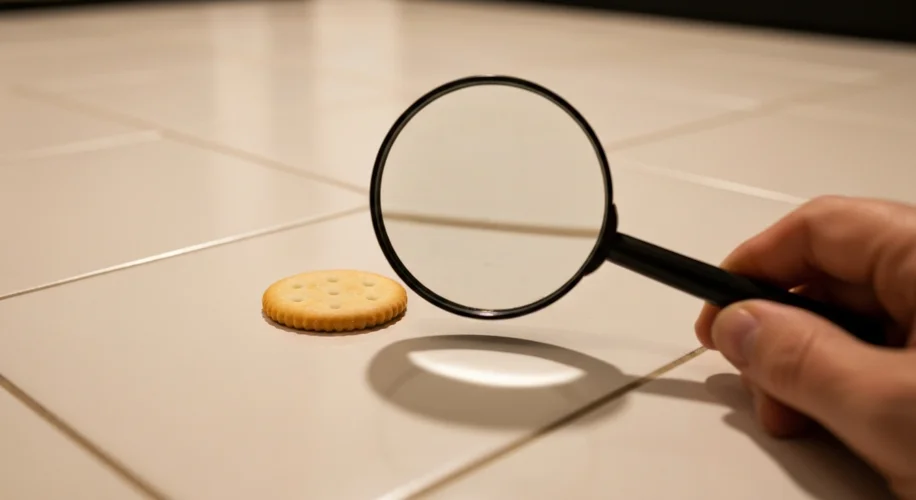We’ve all been there. You drop a piece of food – a cracker, a cookie, maybe even a slice of pizza – and a split second later, you’re faced with a dilemma: eat it or toss it? The unspoken rule for many is the “5-second rule.” But does it hold up to scientific scrutiny?
As someone who loves diving into everyday science, I decided to explore this common myth. It turns out, the answer is a bit more nuanced than a simple countdown.
The Science of Germ Transfer
When food hits the floor, it’s not just gravity at play. Bacteria and other microbes are everywhere, and surfaces we think are clean often aren’t. To get a better look at what happens when food meets the floor, scientists have conducted experiments using agar plates. Agar plates are like sterile petri dishes filled with a jelly-like substance that bacteria love to grow on. They’re a staple in microbiology labs for culturing microbes.
In these experiments, researchers often contaminate surfaces with specific types of bacteria, like Salmonella or E. coli. Then, they press food items – sometimes moist, sometimes dry – onto these surfaces for different lengths of time.
Dry vs. Wet: What Makes a Difference?
The “5-second rule” is often applied universally, but the science suggests that the type of food and the surface it lands on play a huge role in how quickly germs transfer.
Moisture is a key factor. Wet foods, like a slice of watermelon or a piece of cheese, tend to pick up bacteria much more readily and quickly than dry foods. Think about it: moisture helps microbes adhere to the food.
So, what about dry foods, like crackers or cookies? These seem less likely to become instantly germ-laden, right?
Testing the 5-Second Rule on Dry Foods
While the exact rate of transfer depends on many variables (type of bacteria, the specific surface, humidity), studies have shown that even dry foods can pick up bacteria almost instantly. However, the amount of bacteria transferred might be less significant in the first few seconds compared to longer contact times, especially for drier items.
One study found that Salmonella can transfer to a dry cracker in less than one second. This means that even if you snatch it up quickly, there’s a chance some microbes have already hitched a ride.
So, What’s the Verdict?
While the “5-second rule” is a fun concept, it’s not a reliable measure of food safety. Bacteria don’t wait for a timer. They can transfer upon contact.
However, the amount of transfer can vary greatly. Dry foods might pick up fewer microbes initially than moist ones. Still, the safest bet is always to err on the side of caution. If food falls on the floor, especially in a high-traffic area or a place you’re not sure about, it’s best to discard it.
It’s a great reminder that the microscopic world is always active, even if we can’t see it! It just goes to show, science is all around us, even in our kitchens.

